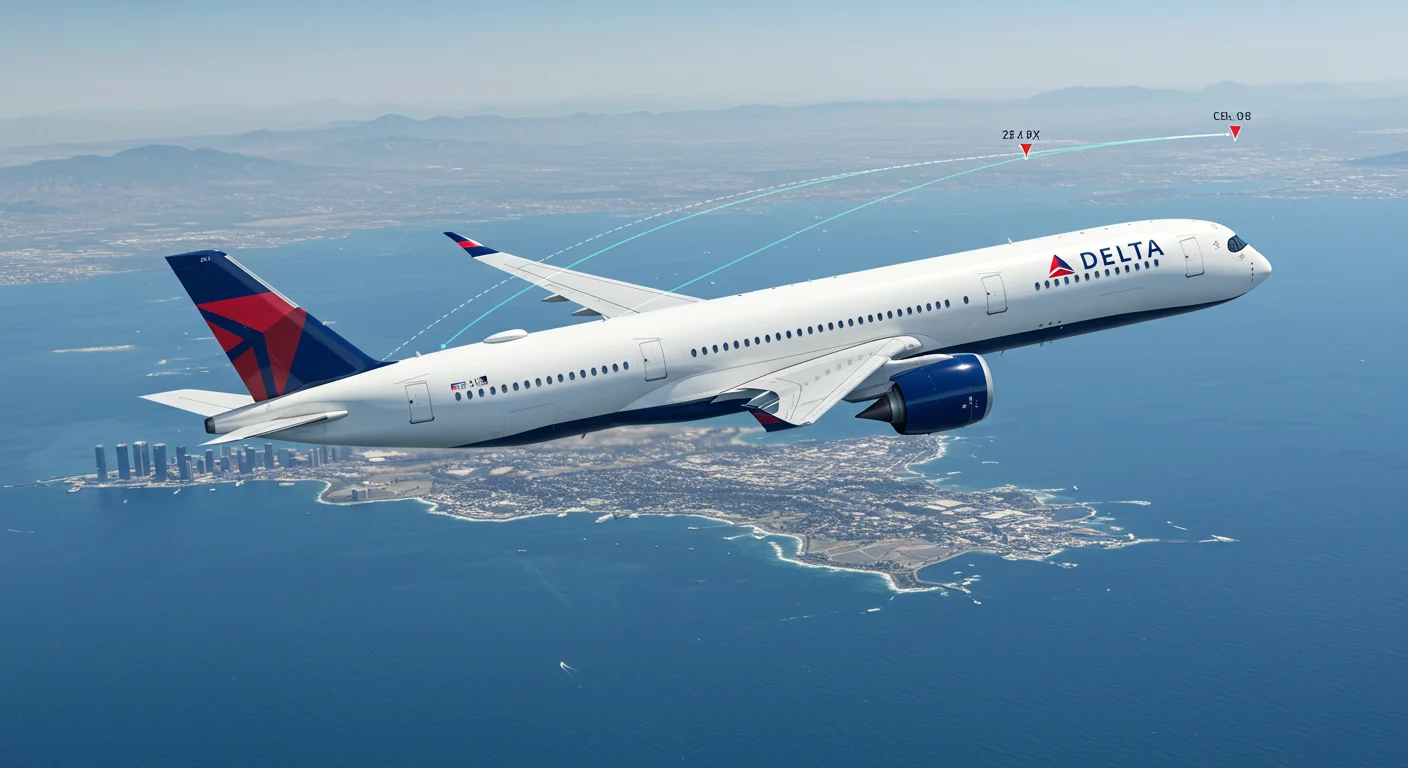
Delta DL275 Unexpectedly Lands at LAX — Full Incident Brief
On a seemingly routine flight from Seoul (ICN) to Atlanta (ATL), Delta Flight DL275 made headlines after it was unexpectedly diverted to Los Angeles International Airport (LAX). For passengers and aviation followers alike, this rare detour raised immediate concerns about safety, aircraft performance, and what triggered the unexpected landing in California rather than its scheduled destination in Georgia. With rising interest in mid-air diversions and real-time flight tracking, the incident involving Delta flight DL275 diverted to LAX quickly went viral on aviation forums and social media platforms.
This article offers a comprehensive, human-written breakdown of the incident, examining what led to the diversion, how the airline responded, and what passengers experienced. Whether you’re researching airline safety protocols or simply curious about this specific flight event, this in-depth guide provides all the relevant details.
Flight Overview: What Is Delta Flight DL275?
Delta Flight DL275 is a long-haul international service operated by Delta Air Lines, typically connecting Seoul Incheon International Airport (ICN) to Atlanta Hartsfield-Jackson International Airport (ATL). The route covers over 7,000 miles and is operated using Delta’s Airbus A350-900, known for its fuel efficiency and long-range capabilities.
The flight usually spans over 13 hours and is popular among both business travellers and tourists commuting between South Korea and the Southeastern United States. Given the complexity and duration of the route, pilots, aircraft systems, and ground coordination are under constant monitoring.
Why Was Delta Flight DL275 Diverted to LAX?
On the day in question, Delta Flight DL275 diverted to LAX mid-flight, triggering speculation from both passengers and aviation analysts. According to preliminary reports and Delta’s official statement, the diversion was due to a medical emergency involving a passenger onboard.
While the Airbus A350 was operating normally in terms of mechanical performance, crew members made the judgment call to divert the flight to the nearest major airport capable of handling international aircraft and providing urgent medical care, which in this case was Los Angeles International Airport (LAX).
Additional insights from air traffic control logs and radar tracking confirmed that the aircraft began its descent toward LAX roughly 9 hours into the flight, bypassing its direct trajectory to ATL.
Timeline of the Incident: What Happened During the Flight?
To provide full clarity on the Delta flight DL275 diverted LAX incident, here’s a chronological breakdown of the key events:
- Departure: Flight DL275 departed Seoul Incheon Airport as scheduled, with a full complement of passengers and crew.
- Cruise Phase: Around the halfway mark over the Pacific Ocean, the crew were alerted to a medical emergency.
- Coordination: The flight deck contacted Delta’s operations center and ATC to coordinate a landing at LAX.
- Descent Initiated: Approximately 45 minutes after identifying the emergency, the plane began its descent.
- Safe Landing: The aircraft landed safely at LAX around 9 hours after departure. Paramedics were on standby to assist the affected passenger.
- Post-Landing: Passengers remained onboard during medical assistance. The flight was later rescheduled to continue its journey to Atlanta.
This quick, decisive response from the flight crew ensured passenger safety while minimizing travel disruption.
Passenger Reactions and Airline Response
Passengers aboard Delta DL275 took to social media platforms like X (formerly Twitter), Reddit, and TikTok to share their experiences. Most praised the calm professionalism of the flight crew and were understanding of the situation, especially once it became clear that the diversion was medically necessary.
Delta Air Lines issued an official statement expressing concern for the affected individual and gratitude to the passengers for their patience:
“Delta Flight DL275 diverted to Los Angeles out of an abundance of caution due to a medical emergency. The aircraft landed safely and was met by medical personnel. We appreciate the professionalism of our crew and the understanding of our customers.”
The airline arranged accommodations and rebooking for travellers facing delays, demonstrating a high level of customer service in response to the disruption.
The Role of LAX in Flight Diversions
LAX is well-equipped to handle international flight diversions like DL275. With its expansive runway system, advanced medical facilities, and rapid ground response teams, it’s one of the few West Coast airports capable of safely receiving large aircraft like the Airbus A350 on short notice.
Diversions to LAX are not uncommon, especially for trans-Pacific routes, as it offers both logistical support and efficient rerouting potential for onward flights. For passengers and airlines alike, this means minimized delays and prioritized safety.
What Happens After a Flight Is Diverted?
When a commercial aircraft is diverted, several systems go into motion:
- Medical Response: Paramedics board the aircraft if a health issue is the cause.
- Customs and Immigration: Even diverted international flights must follow entry protocols.
- Aircraft Inspection: Engineers inspect the plane for safety before clearing it for onward travel.
- Rebooking or Delay Handling: Passengers are updated and offered options depending on the delay duration.
In the case of Delta Flight DL275 diverted to LAX, Delta ensured that timely information was shared, and passengers were accommodated professionally.
How Often Are Long-Haul Flights Diverted?
Diversions like that of DL275 are relatively rare. Statistically, fewer than 1 in 600 flights experience unplanned diversions. Medical emergencies are among the top reasons, along with:
- Weather disruptions
- Mechanical issues
- Security threats
- Crew incapacitation
Airlines like Delta have strict protocols and onboard equipment to manage emergencies, but diversions remain a last-resort option to prioritize passenger safety.
Aviation Safety: What This Means for Travellers
The Delta flight DL275 diverted lax case underscores the airline industry’s commitment to safety. Despite the inconvenience, the swift decision to divert ensured that proper medical attention was delivered, and no lives were risked.
For frequent flyers, this event serves as a reminder of:
- The importance of filling out medical history forms, if necessary
- Paying attention to crew instructions during unexpected events
- Understanding that diversions, while disruptive, are crucial for safety
Conclusion
The incident involving Delta Flight DL275 diverted to LAX highlights how real-time decisions, safety protocols, and airline coordination can make a significant difference during unexpected situations. From swift crew action to a smooth landing and proper medical care, the event was handled professionally from start to finish.
While no one boards a flight expecting a diversion, this incident reassures us that major airlines like Delta are well-equipped to manage mid-air emergencies with speed and care. Whether you’re an aviation enthusiast, a frequent flyer, or simply following airline news, this case offers a rare inside look at the complexities and logistics of international flight operations.
FAQs
1. Why was Delta Flight DL275 diverted to LAX mid-flight?
The flight was diverted due to a medical emergency involving a passenger onboard.
2. Was the aircraft damaged or experiencing technical issues?
No mechanical issues were reported; the aircraft landed safely.
3. What type of aircraft was used on Delta DL275?
An Airbus A350-900 operated this long-haul international flight.
4. Were passengers delayed for long after the diversion?
There were minor delays, but Delta provided rebooking and support.
5. How far was the aircraft from Atlanta when it diverted?
The diversion occurred about nine hours into the flight, over the Pacific.



